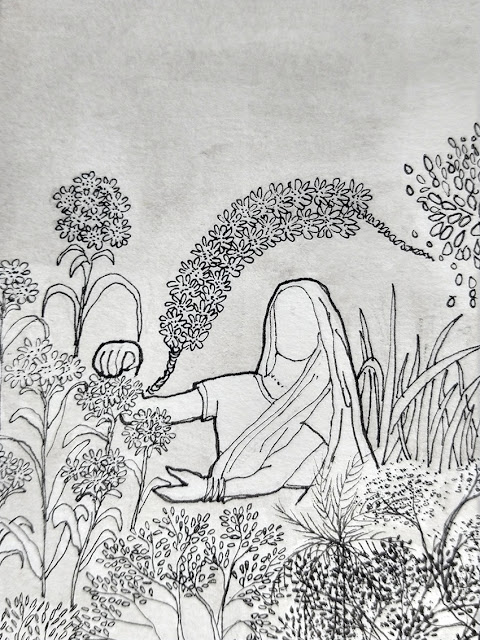John Berger asked the question "Why Look at Animals?" in 1977 wherein he mourned the loss of meaning that was once held in the gaze between humans and animals. The reading seemed to suggest that the Anthropocene debate had been realised much before it became popular and serious in recent years. All his observations still remain meaningful and relevant, and infact come to surface as I was beginning to close this post!
Here are some photographs from the drawings students made in the third year Environment studio at SEA. Architecture, for the longest has hardly bothered itself with the Environment - notice the capital E. And this Environment is comprised of the diversity of life forms that often go missing from the object of representation in our practices. We have hardly addressed the issue in our practice, for we do not even begin to document them in the first place.
In the present set of drawings, I particularly find fascinating how animals and humans begin to appear within a single frame, beginning to seem quite normal. In the drawings below, a new empathy gets mobilized. The manner in which animals occur in our fields of sight within the frame of the drawings is particularly appealing. They begin to ask questions to themselves as well as the viewer. Their bodies suggest a state of idleness or urgency, as if suggesting to us that they were simply (and are still) minding their own business. In some frames, the humans seem oblivious, or even frozen. These are landscapes we come to inhabit today.
Last year students made drawings of the transforming landscapes of Goa quarries. The earlier camouflaging snakes, peacocks and crocodiles were revealed as the terrains were torn and tree covers were peeled off. Just as they find their ways, we find our ways too.
(all drawings by third year students, this year)
(Photography seemed to be prohibited - as the last snapshot suggests, but I remained unobedient).











2 comments:
Beautiful drawings!
Beautiful
Post a Comment